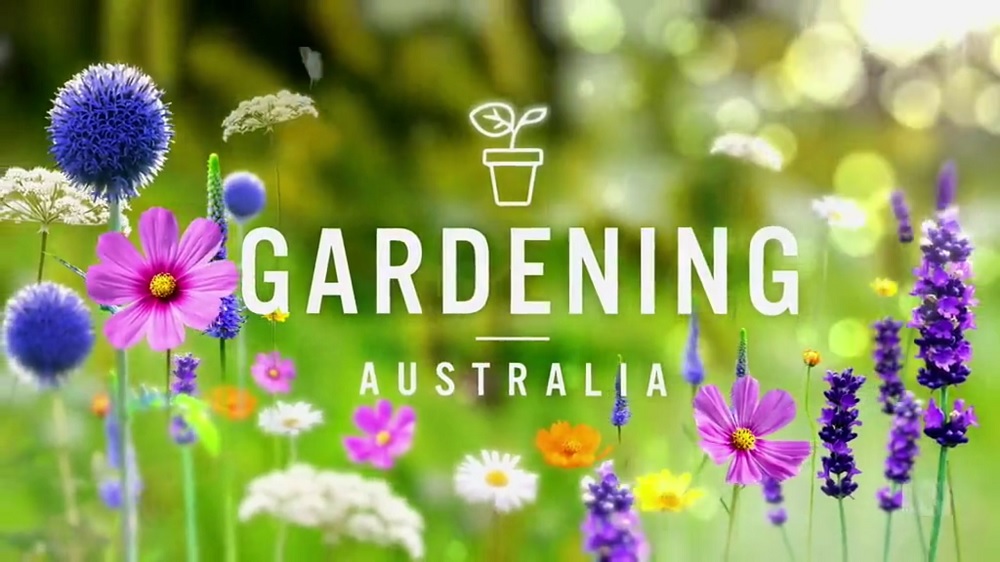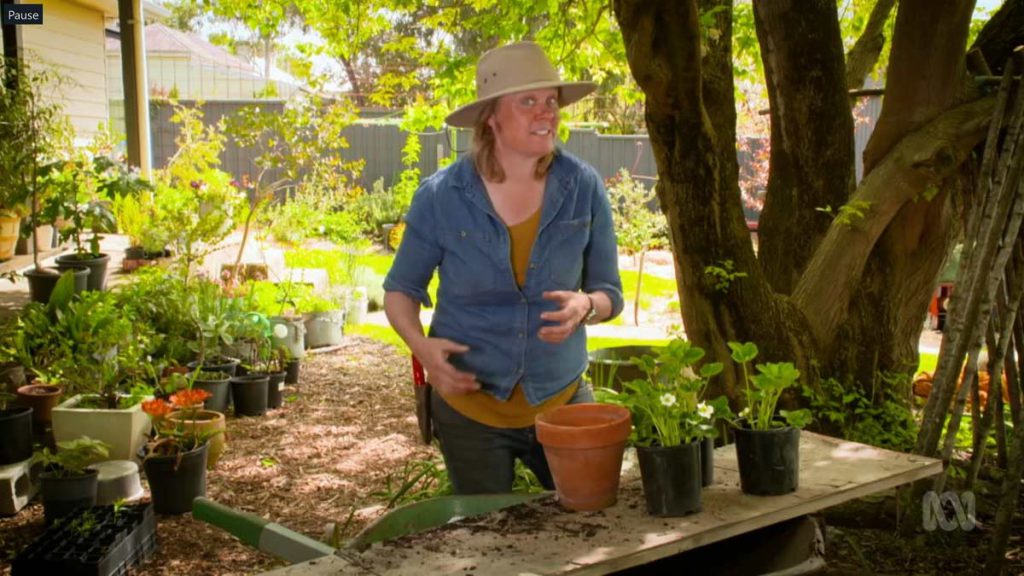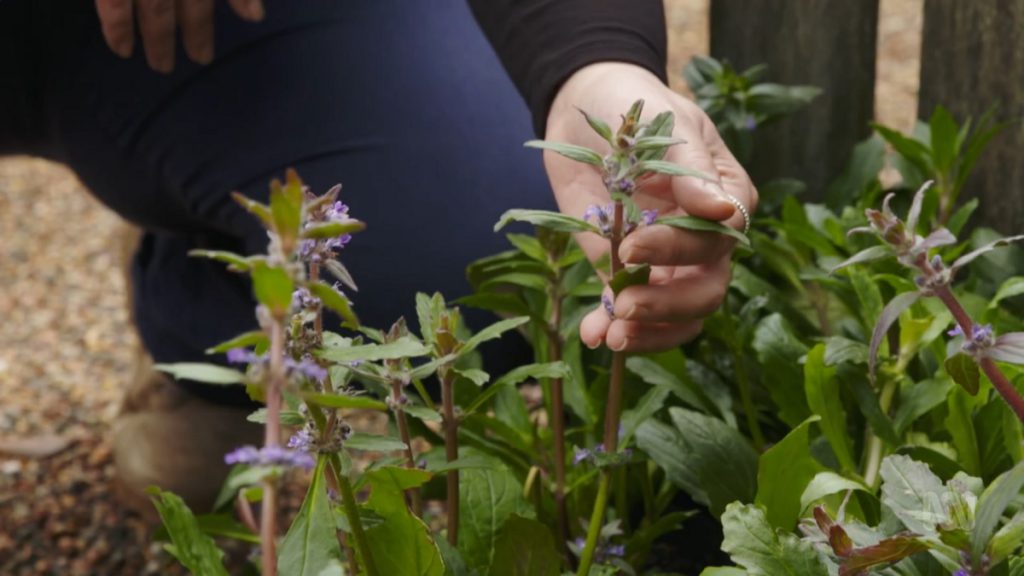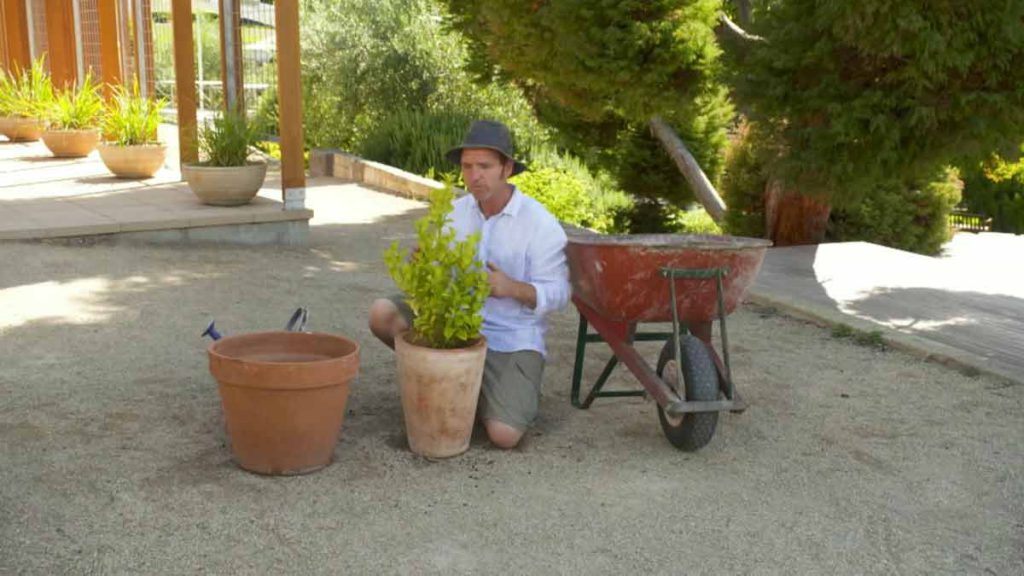Gardening Australia episode 16 2021: Millie Ross meets a chef drawing on his culture to create distinctive dishes, Jerry Coleby-Williams revisits a delightfully individual garden, and Clarence Slockee meets a pair keen to promote their local plants.
Gardening Australia has always provided practical, trustworthy and credible gardening advice to inspire and entertain. Inspiring, entertaining and full of practical advice, join Costa Georgiadis and the team as they unearth gardening ideas, meet avid gardeners and look at some of the most inspiring gardens from across the country.
Gardening Australia episode 16 2021
Tastes Like Home
Millie meets chef Sam May, who is drawing on his cultural knowledge to create distinctive dishes featuring a range of Australian native plants. Chef Sam May is keen to showcase these ingredients. He says he learnt two different styles of cooking from his parents. He studied at William Angliss college, which has a garden full of Australian edible plant that can be used for the cooking school.
It includes the strawberry gum, which has a really sweet flavour. Sam uses the dried, powdered form to flavour ice cream, cakes or anything. He also uses a lot of Mountain Pepper – both leaves and seeds. Sam puts together a great meal of kangaroo steak with freshly picked warrigal greens and mountain pepper. He has kindly shared his recipe with Gardening Australia.
FAQs – Fig Tree Flowers | Cyclamen | Fire and Weeds
Tino reveals the hidden flowers of figs, Jane has tips on caring for cyclamen after flowering and Clarence explains how some weeds react to fire.
Good Morning Vietnam – Gardening Australia episode 16 2021
Jerry returns to a garden he visited nearly 10 years ago to discover it’s evolved to delightfully reflect its owner. Jerry visited Rosa Nguyen’s colourful suburban garden in Brisbane nearly 10 years ago and he always knew he wanted to go back. In 2021 he’s made it and has found her personality is reflected in the garden more than ever.
The ornamental aspect is now much more dominant, with figurines adorning pot plants, and religious icons in pride of place. The biggest change is how the orchid collection has grown from about 20 plants to about 500 plants spread right through the garden.
Favourites include Vanda ad Dendrobium orchids. It’s not for the faint-hearted – Rosa spends 3-4 hours a day tending her plants, checking for pests and problems. She propagated many of them herself, putting cuttings straight into potting mix. Her tip is not to water for five days, to avoid the cuttings rotting. Some plants are trained as bonsai, including a Desert Rose, displayed to show the root patterns, which are highly valued in Vietnam.
To fit them all in, Rosa has created some lovely, layered display areas, ranging from small pots of Desert Roses in the foreground, past a mid-section with African Marigolds and Dancing Lady Orchids to a backdrop of Dragon Fruit, with Paw Paw and Guava trees behind.
Grassroots Change – Gardening Australia episode 16 2021
Costa chats with the CEO of Reconciliation Australia Karen Mundine about the movement’s 20-year history and how gardeners can be part of our nation’s growth.
Plants of the Illawarra
Clarence catches up with some plant lovers who developed a website to get more Illawarra plants being grown in local backyards. Clarence catches up with some plant lovers who developed a website to get more Illawarra plants being grown in local backyards. There are more than 850 indigenous species in the diverse landscapes between the coast and the hinterland escarpment.
Emma Rooksby and Leon Fuller together founded a website called Growing Illawarra Natives that is a ‘one-stop-shop’ for information on local plants. It’s designed to help people grow these plants in their gardens.
“It’s a great place for growing plants,” says Leon. The suggest some small trees, medium shrubs, as well as thick groundcovers that are good for excluding weeds from gardens.
A Drop of the Good Stuff
Sophie visits one of oldest vineyards in the Barossa to learn the role native plants play in producing their premium wines. Viticulturist Prue Henschke studied botany and zoology and applies this to her management of the three main vineyards within the 120-hectare estate. One of them, Hill of Grace, has some of the oldest vineyards in the world.
Prue said it started with looking at mulching to retain moisture, regulate soil temperature and suppress weeds. They use triticale straw – a cross between wheat and rye – which takes longer to break down than other straw. This sits on top of the compost, made from grape stalks layered with cow manure. A major winter task is pruning. Prue demonstrates a traditional technique aimed at improving sap flow; each vine ends up with one new cane and one new spur on either side.
At the end of each cane, she cuts through the bud because the hard disk here prevents diseases entering the wound. Cuts on old wood are protected by painting the ends. It’s also important to prune when it’s dry, to reduce the chance of fungal spores being carried by damp air.
Glorious Grass Trees
Josh looks at WA’s ancient grass trees – both their cultural role and how one nursery is saving hundreds from being bulldozed.
City Secret
Jane discovers the hidden gems that are literally overlooked by drivers crossing West Gate Bridge into Melbourne. Originally the area was sand dunes fringed by swamp and tea-tree scrub, part of the rich hunting grounds of the Yalukit-willam tribe. There is perhaps 1 hectare of remnant vegetation – some of the slow-growing saltmarsh plants are probably older than Melbourne.
In August 1835, John Pascoe Fawkner describes it poetically: “Velvet-like grass carpet, decked with flowers of the most lively hues” plus lagoons home to “flocks, almost innumerable, of teal, ducks, geese, and swans, and minor fowls”.
But by 1979, The Age described the view from the newly opened Westgate Bridge as “scrofulous scenery indeed … dead water, swamp, sick factories, dead wood, haze, gasping barges, wretched refineries, wheezing chimneys, dead grass, institutional putrefaction”. The Federal Government recognised the need for remediation and funded the creation of a park as part of Melbourne’s 150th celebrations in 1984-5. A former sand mine was converted to a salt-water lake – but in the process a lot of Melbourne’s rubbish ended up dumped on the site, and President Lyn Allison says it was visible for many years.





Pingback: Gardening Australia episode 17 2021 — gardening advice to inspire